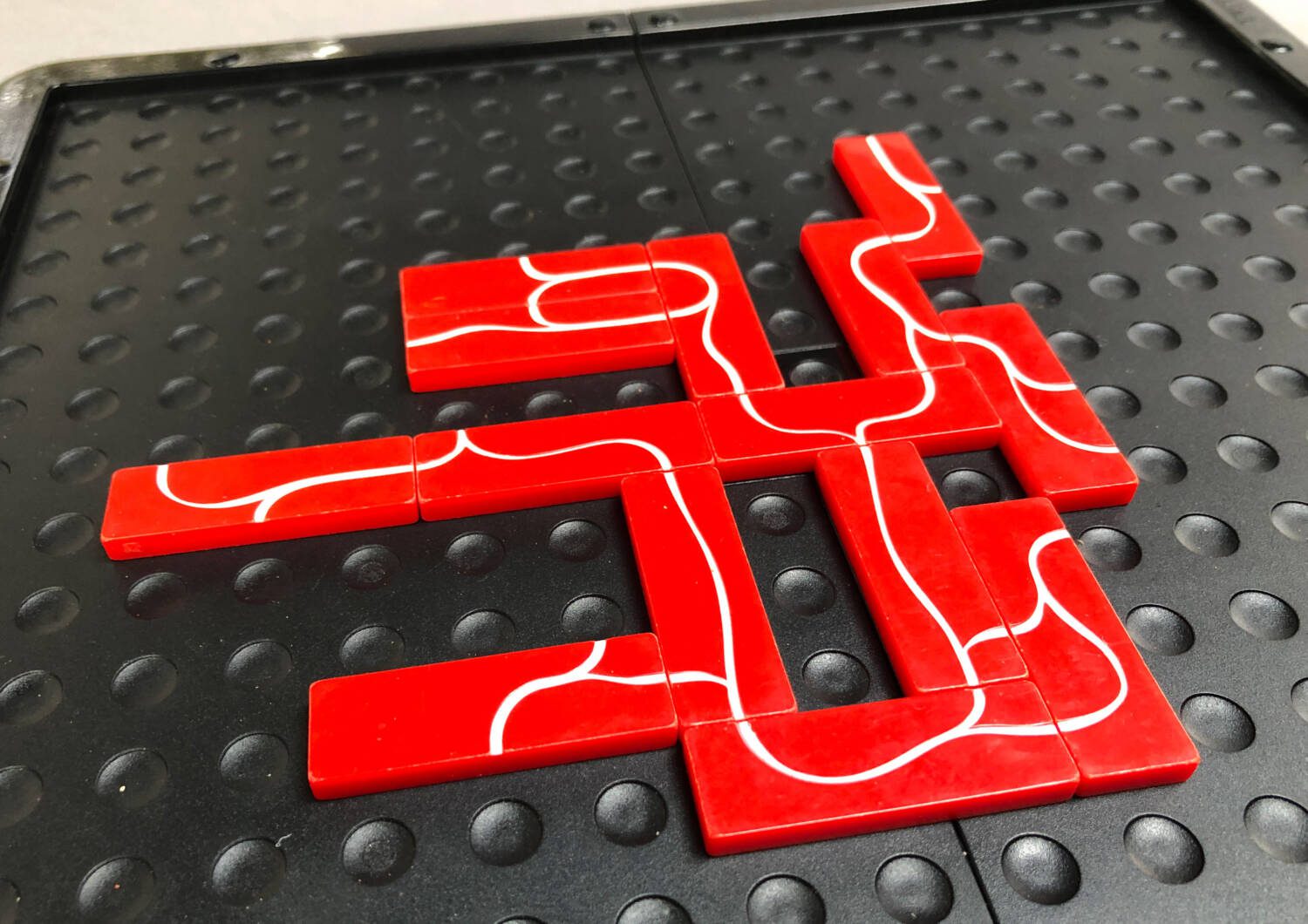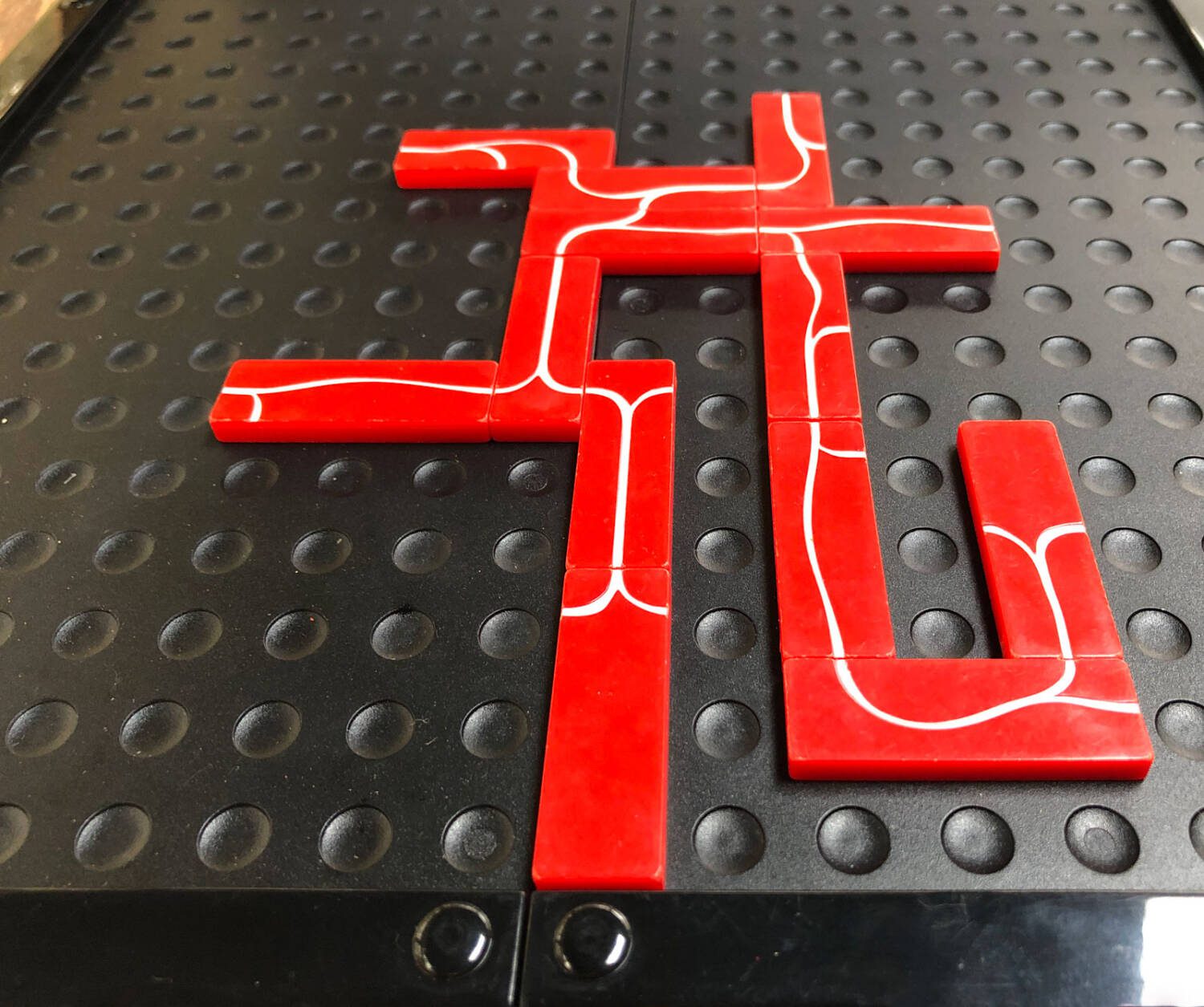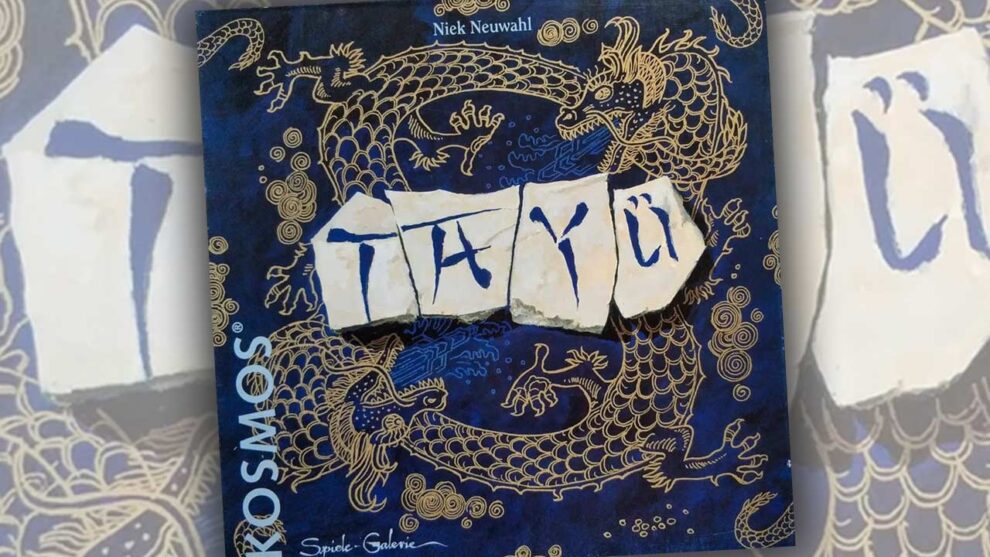Ta Yü is a connection game, where you and your opponent are each trying to join one side of the game board to the other. While many connection games are mutually exclusive—that is, only one player can complete the connection and thus win the game—Ta Yü is not. Both players can create multiple pathways that connect their opposite sides. In fact, your final score depends on it.
How to Play
The Ta Yü board is square with 18×18 round indentations set into the playing area. These dimples allow the rectangular game pieces—with three corresponding bumps on their bottoms—to fit onto the board and stay in place, even if the board gets bumped. It’s a simple design and one that’s very well executed.
Players start the game by choosing two identical, opposite sides of the board as their own.
The randomly chosen starting player takes the bag of pieces and blindly chooses one to play. Each piece is a 1×3 rectangle with a single line that terminates at exactly three places along its edge. The first piece played must be played somewhere in the four center indentations on the board. Each piece played thereafter must connect to any other piece already on the board.
When placing a new tile, all three of a piece’s connecting lines must be legally accounted for. Either they (a) connect to another piece’s line or (b) resolve to an open spot on the board or (c) connect to the edge of the playing board. A connecting line may never end against a blank part of another piece.

Play continues with each player drawing pieces and placing them on the board until someone draws a piece that cannot legally be placed. You’ll both tally your scores and the one with the most points is the winner.
As with most of my favorite abstracts, Ta Yü has an inspired twist that makes it much more challenging.
Each standard point along the sides of the board counts as 1 connection for scoring, with raised dots counting as 2 connections. However, your score is not the sum of your connections to either side of the board. Your score is the product of the total connections of one of your sides multiplied by the number of connections on the opposite side. Thus, it is possible to have a total of 10 connections on one side and no connections on the opposite for a total of (10×0) zero points.
Tiles can be played both offensively and defensively. You’ll want to create as many connections on both of your sides to the board, especially hitting those 2 point connections. And, of course, while trying to keep your opponent from doing the same.

The flavor text on the back of the box suggests that Ta Yü was designed to celebrate an ancient Chinese hero who saved his country from flooding by building a series of waterways. I’ve used this imagery to help new players visualize what they’re trying to accomplish on the board. For me, I see the center of the board raised, much like a pyramid, with the lines as water streams seeking the edges of the board.
I’m typically not one for luck in a game, preferring to win or lose on my own devices. The draw bag full of tiles doesn’t bother me too much, however—except when I can’t manage to draw exactly the right tile at exactly the right moment. (Oh, but when I do, it’s wonderful.)
Ta Yü is an elegant game. While laying tiles, both players are creating a pattern that flows across the board. It’s a puzzle, of sorts, that is uniquely visually pleasing each time you play.
And speaking of playing, Ta Yü is also a game that inevitably gets played a second time, right after the first game ends.











This looks amazing! Over the years I have played many a connection game (my favorite was Twixt). There are beautiful games that are adjacent to this genre (Tsuro comes to mind). But this is one I have somehow never seen! Thanks for a wonderful review.
I am headed over to BGG to add this one to my wish list!
OK… this is not a cheap game, now is it? Wow.